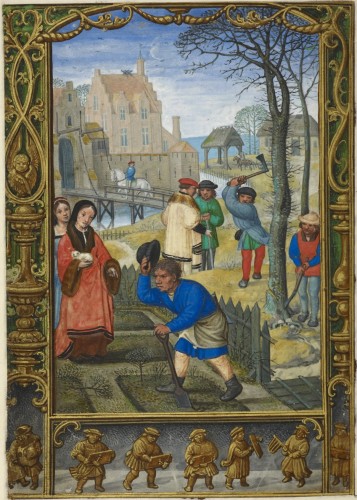Historians of Netherlandish Art will sponsor the following session at the Sixteenth Century Society conference to take place in Bruges, 18-20 August, 2016. Please send paper proposals to the session chair as noted below. For general information about the conference, please visit the website: www.sixteenthcentury.org
The Art of Renaissance Bruges
Renaissance Bruges was vibrant with artists, writers, and intellectuals. Despite the famous narrative of the city’s decline, it remained a distinctive and productive cultural centre, as the innovative exhibition Bruges and the Renaissance: Memling to Pourbus (1998) first argued.
In Bruges, eminent artists including Hans Memling, Gerard David, Adriaen Isenbrandt, Simon Bening, Lanceloot Blondeel, Pieter Pourbus, and Marcus Gheeraerts produced paintings, drawings, prints, maps, books, and monument designs. Many of these works have received limited attention, as have those made by Bruges artists working in other media like sculpture, tapestry, and stained glass. This relative neglect belies the cultural importance of Renaissance Bruges—the city was home to leading intellectuals like the humanist Juan Luis Vives, the jurist Joos de Damhouder, and the historian Jacob de Meyere. The great rederijkers Cornelis Everaert and Eduard de Dene spent their entire careers in Bruges. Local printers from Colard Mansion to Hubert Goltzius brought novel and learned texts to press. The city attracted noteworthy visitors such as Dürer, Erasmus, Thomas More, and Johannes Sambucus. It also nurtured its ties with the Habsburg court through large-scale projects like the monument to Margaret of Austria and the tombs of Mary of Burgundy and Charles the Bold. The varied art of Renaissance Bruges registers the issues that preoccupied the city itself and Netherlandish society and culture.
This panel invites papers that address artistic production, across all media, in late fifteenth- and sixteenth-century Bruges. Possible topics may include:
– late fifteenth- and sixteenth-century Bruges art in Netherlandish and Renaissance art history
– social networks of artists and patrons
– microhistories of patrons and collections
– projects for religious and political authorities
– artistic dynasties
– the role of the city artist
– the local art market
– Bruges art for export
– Bruges artists on the move
– interactions between workshops
– distinctive local forms and themes
– the impact of Reformation ideas on Bruges art and artists
Please email an abstract of 250 words, contact information, and a CV to Tianna Uchacz by January 31, 2016.
Please be advised that all participants are responsible for their own costs of travel, registration, membership, etc.

